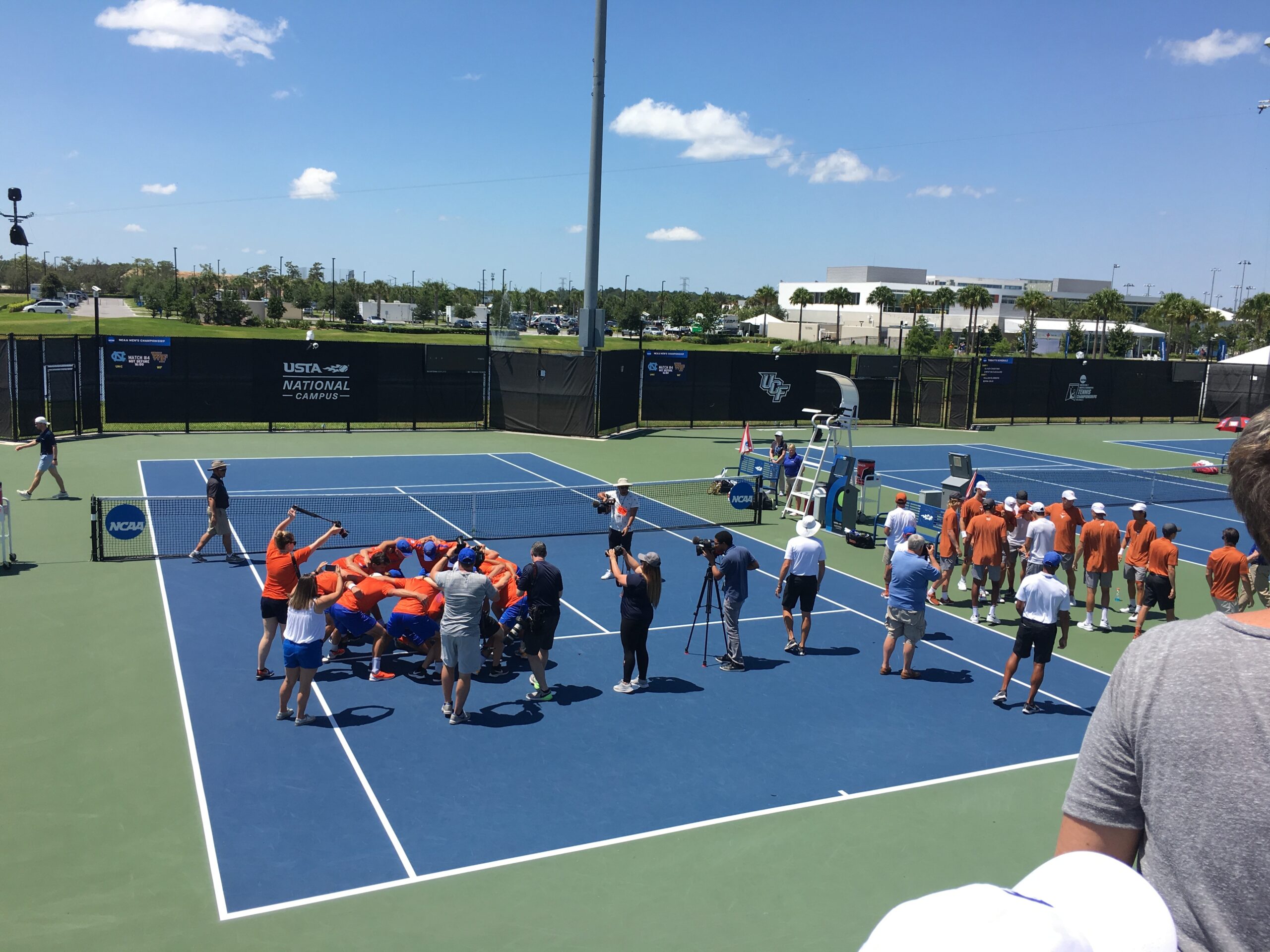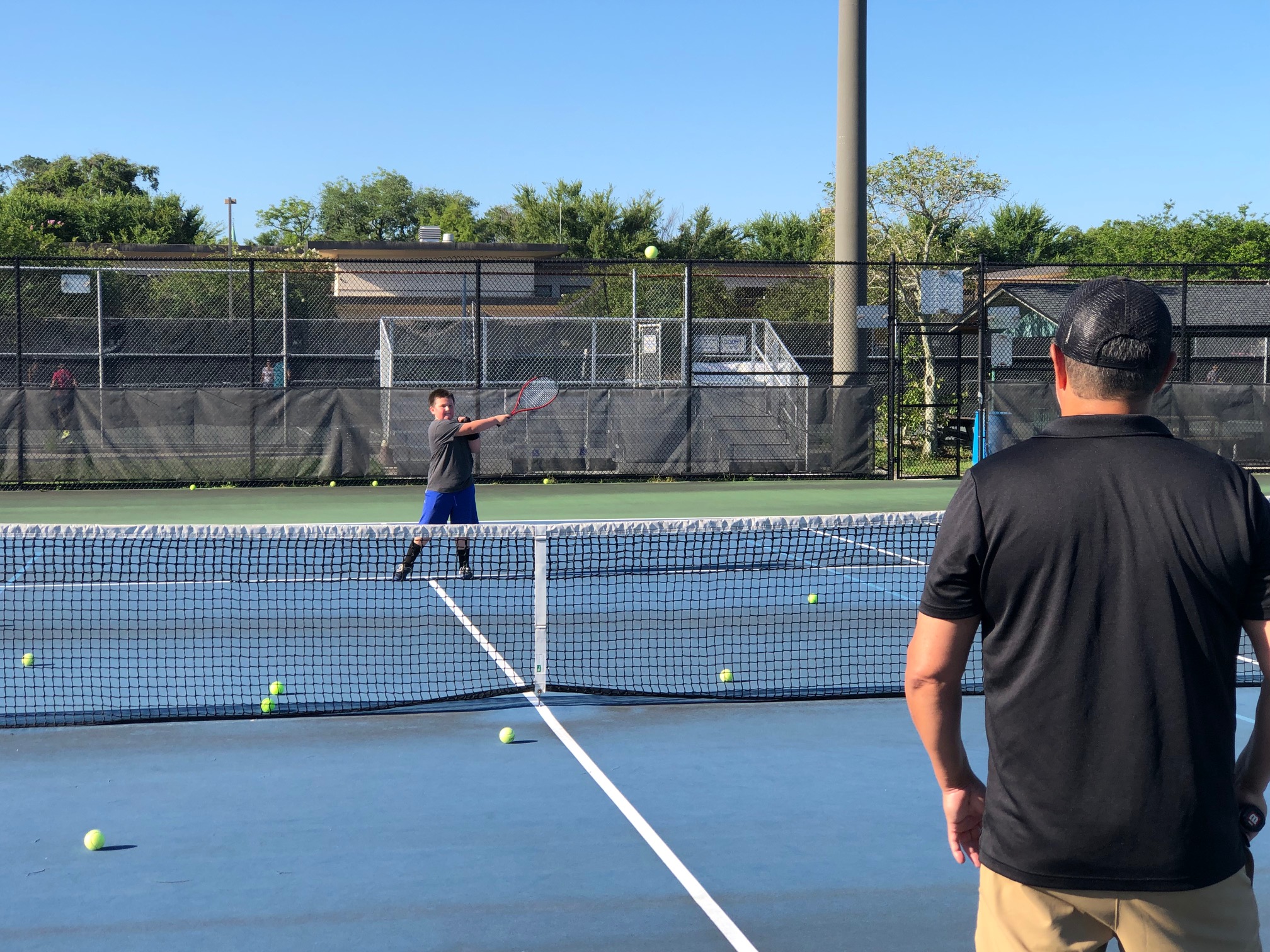College tennis in the United States offers an excellent opportunity for junior players worldwide. It can serve as a viable pathway to professional tennis—out of 300 players in the ATP, there are about 35 players who have played college tennis for at least one season.
Of course, this number fluctuates, but many great players–some legends–have played tennis in college before turning pro:
- Jimmy Connors – UCLA
- Arthur Ashe – UCLA
- John McEnroe – Stanford University
- Bob & Mike Bryan – Stanford University
- Jennifer Brady – UCLA
- Lisa Raymond – University of Florida
- Danielle Collins – University of Virginia
- John Isner – University of Georgia
- Kevin Anderson – University of Illinois
- Steve Johnson – USC
- Cameron Norrie – Texas Christian University
Let’s examine whether collegiate tennis can springboard players to the pro tours–either the WTA or the ATP.
What is college tennis?
College tennis (also called NCAA tennis) is made up of Division I, Division II, and Division III schools. There are 314 Division I schools in the United States that compete throughout their season, which culminates in the NCAA championships.
There are about 20,000 college tennis players in the United States, with only 5,000 playing Division I tennis. The Division II and III teams are lower-level programs and rarely funnel into the pros.
Going to College or Turning Pro?
Unlike other collegiate sports—football, baseball, and basketball—there’s no one recruiting college players for the ATP and WTA tours. A tennis player’s career is entirely up to them.
Only recently has college tennis been viewed as a starting point for a professional tennis career instead of an alternative path. There have been many players with successful NCAA careers that have transitioned into successful professionals.
John Isner is the first ATP player that comes to mind, playing all four years at the University of Georgia. Since turning pro in the summer of 2007, he’s won sixteen career titles, reached No. 8 in the world in July 2018, and has been a serious contender at every Grand Slam tournament.
However, there are stories of collegiate players turning pro unable to break into the Top 100, which creates the question of whether turning pro straight from a successful junior career or playing in college is the better option.
Who should play college tennis and why.
If the goal is professional tennis, regardless of how you get there, all players must compete at the lowest professional tournaments–future or challenger events. Futures and Challengers are organized separately from the ATP and WTA tours. While prize money is minimal, they provide valuable international ranking points and professional competitive experience.
If a player can succeed at these events and win titles, they likely don’t need to go to college to develop their game. Success at this level means that they can compete with players ranked inside the Top 100 and have the potential to climb the rankings to enter into the different ATP or WTA events.
If a player struggles in future or challenger events, they should seriously consider playing college tennis. They likely aren’t ready for the professional circuit and can benefit greatly from further player development, and the competition will build up their confidence.
Choosing college tennis first doesn’t mean the pro tour is inaccessible.
In recent years, professional players outside the Top 100 are speaking up about how difficult it is to make money and simply break even when playing on tour.
The costs of traveling the world to play professional tennis add up and can lead to financial hardships if a player hasn’t developed their tennis, managed expectations, or readied themselves for top-level competition.
You don’t have to commit to all four years. Many pros left after their first, second, or third years. College tennis players can even play future, challenger, and ATP-level events throughout their college careers.
College tennis also offers a team environment in such an individualistic sport. Many college players find their passion for tennis again after spending their childhood chasing tournaments and junior ranking points. While others thrive on the opportunity to cheer on their teammates and play in front of their fellow students.
Cameron Norrie, currently ranked No. 13, left college a year early to turn pro and benefited from his college tennis experience, “I went to college to have a more balanced lifestyle and normal life. I was just burnt out from tennis a bit after juniors and I felt like I wanted to do something else. College helped me learn to love the game again.”
The USTA is here to help.
The USTA National Collegiate Varsity Committee released a packet in 2010 called Going to College or Turning Pro? Making an Informed Decision to help top junior players decide what pathway to choose.
As then-general manager of USTA Player Development, Patrick McEnroe, said, “Ninety-nine percent of junior players should aspire to play collegiate varsity tennis. Only the truly exceptional should be planning to proceed directly from the ranks of junior tennis to the world of professional tennis.”
The packet breaks down the cost of going to college vs. the costs of playing the professional tour at a competitive level, what a professional player can make annually, or what is needed to break even annually.
Two important conclusions the packet draws are:
- “Given that the average of top tour professionals is 25-26 years old for men and 23-24 years old for women and that it takes 3-4 years to break into the Top 100, from a developmental tennis perspective, one conclusion may be that an optimum timeline calculus may be to go to college and then turn pro at ages 21-22.”
- “Your college experience gives you an opportunity to develop your game (with lots of top competition, paid coaching, strength training, nutritionists, mental training/peak performance trainers, travel, expenses, etc.) while developing physically, mentally, personally, emotionally, and academically.”
Overall, even the USTA believes that there is major value in playing for a Division I college before turning pro. Mainly because a collegiate player will likely earn a four-year degree that can help them with future endeavors.
In recent years, the USTA has implemented the DREAMS and College Tennis Condition Plan programs to help prepare college tennis players to transition to the pro tour. Click here to learn more about both programs.





